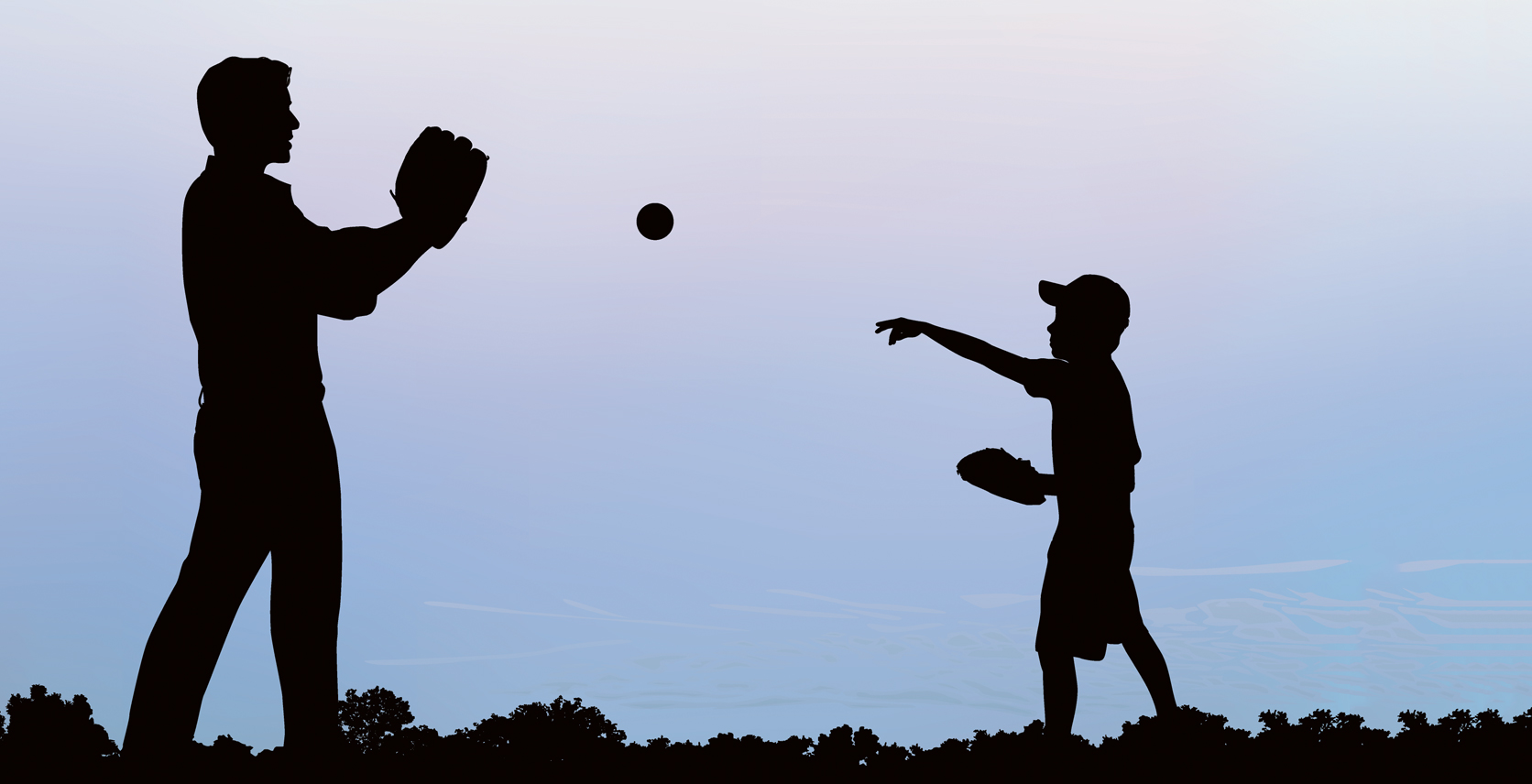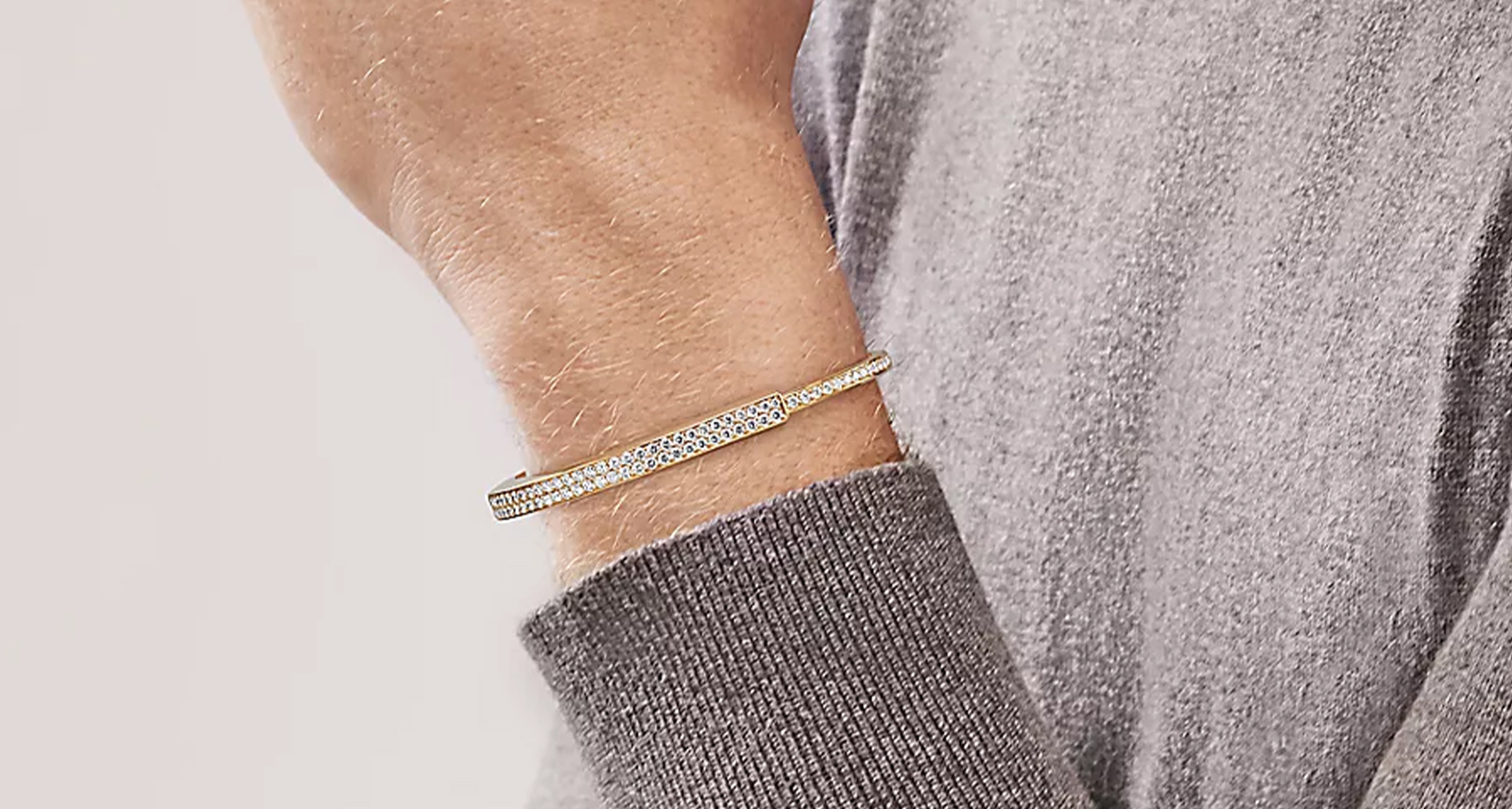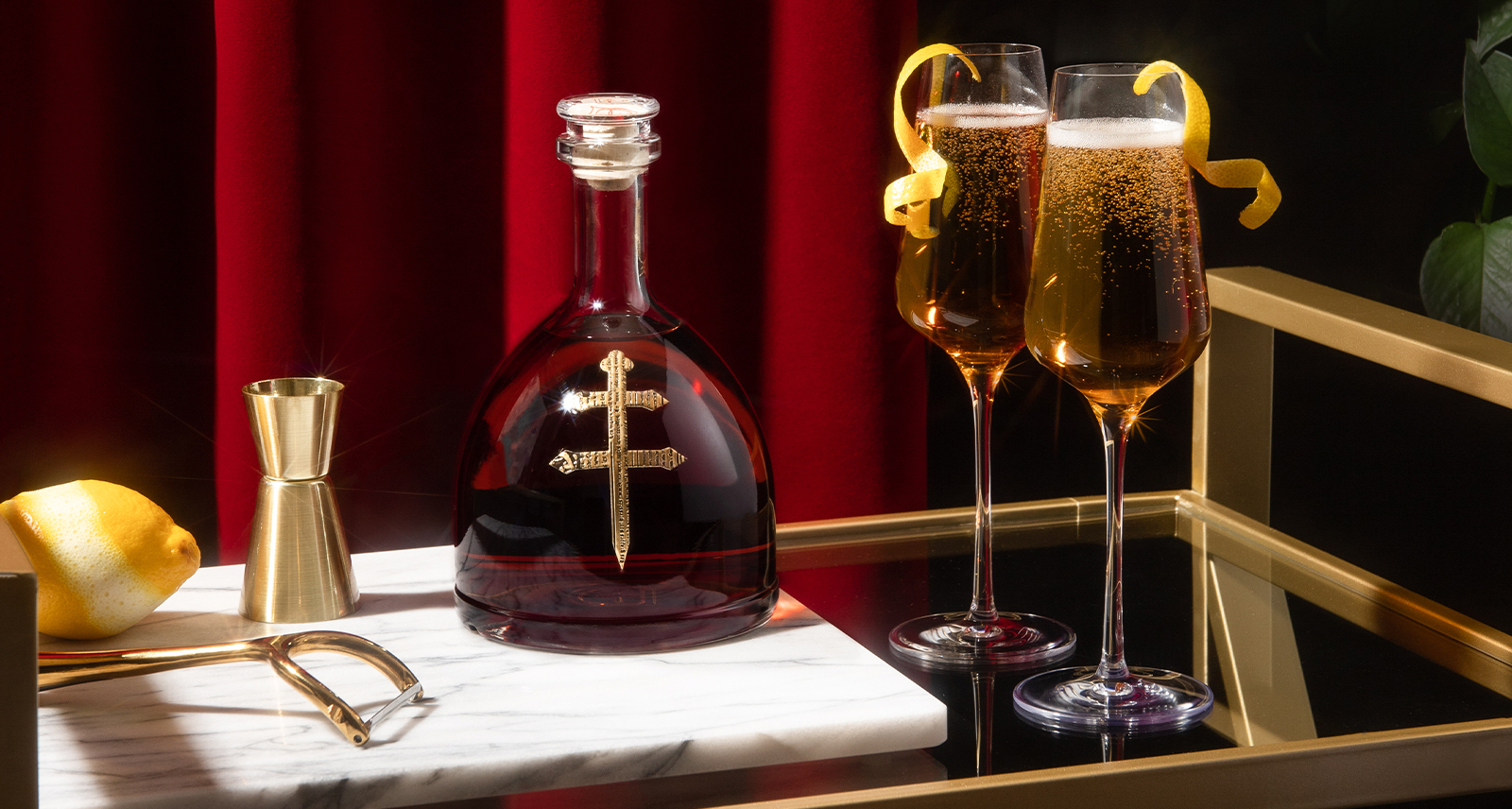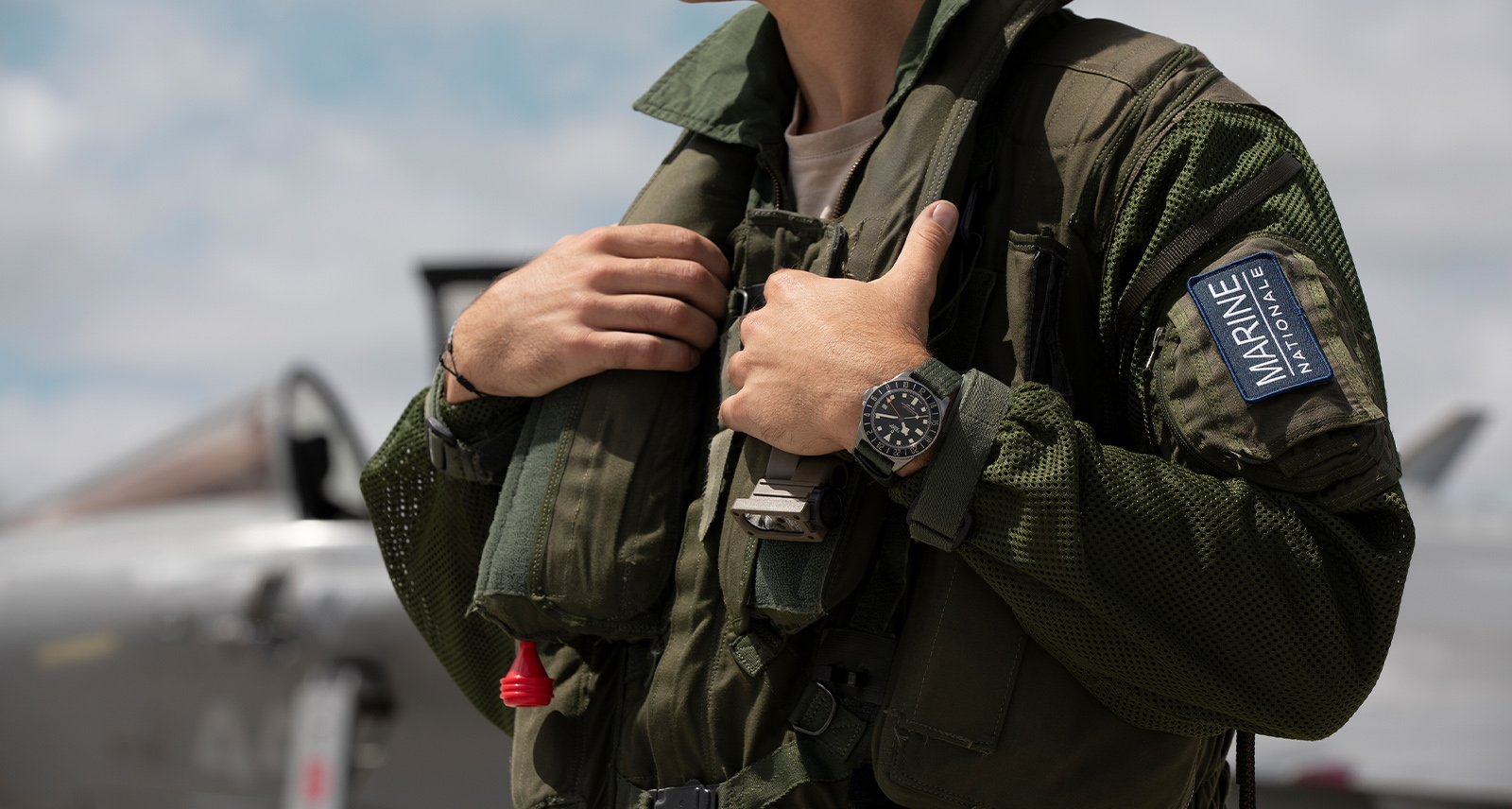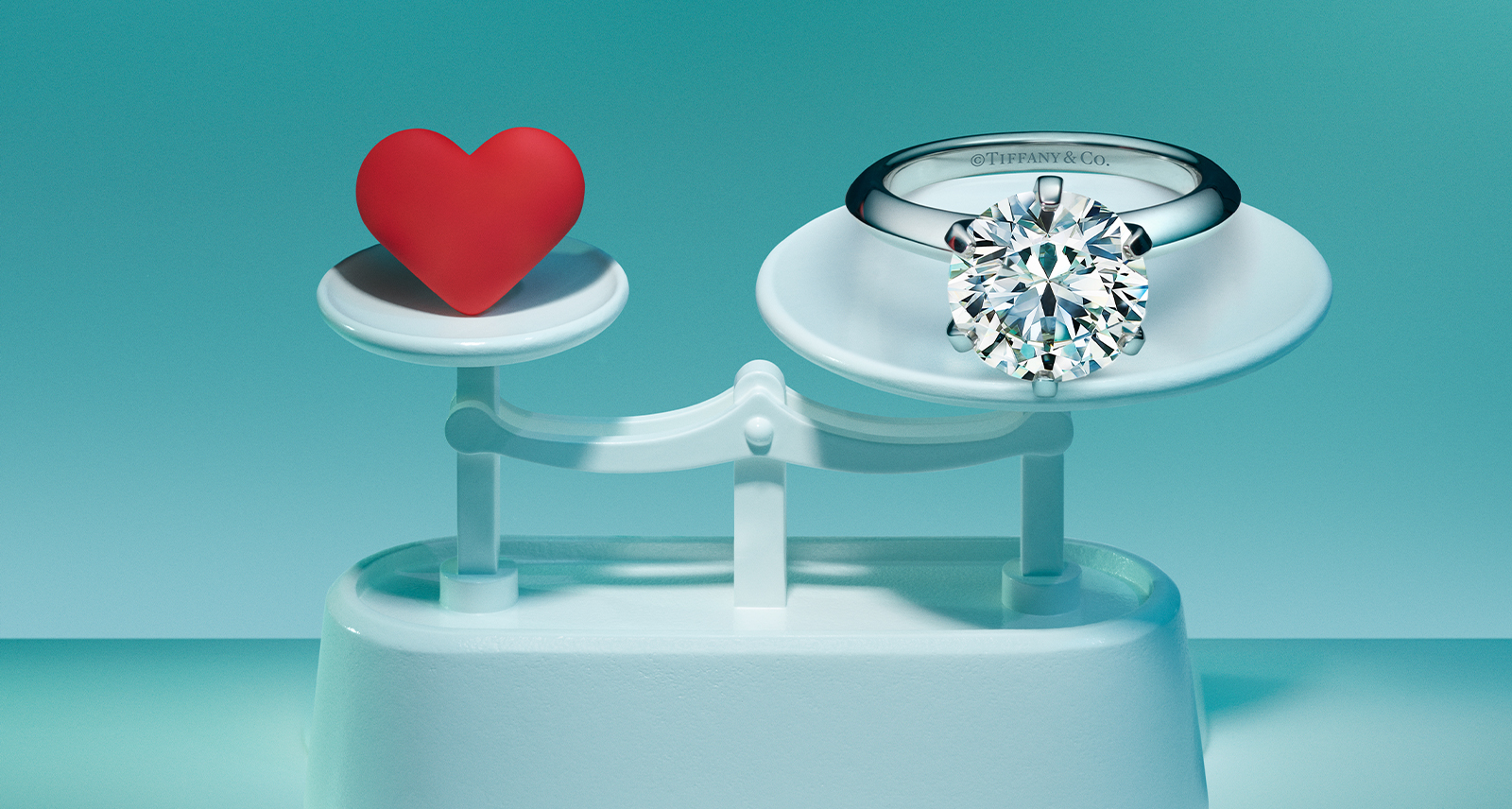Why You Should Play Catch With Your Son
In the most purely nostalgic, almost Rockwellian childhood memories I have of hanging out with my dad — even more than the ones where we’re holding pool cues or marshmallow sticks or stones to skip — we’re wearing baseball mitts.
Just the two of us at the park down the street: throwing the ball back and forth, back and forth. And when the sun went down we’d head towards home. But then usually we’d stop somewhere on the street, under halcyon cones of yellow light, and throw the ball some more. That thwacking sound of leather into leather seemed more pronounced and echoing at night.
And if there was a fall chill — with all those crisp, dry-leaf smells in the air — I could almost feel each catch like a point of memory tattooed on my brain.
I know, of course, that is the most hackneyed convention in all of North American father-and-son literature, lore, and imagery. Throwing a ball together, in a “Cats In The Cradle” kind of way, is shorthand for everything. But that’s kind of what this column is about — that and the mitts themselves.
I can picture my childhood baseball mitt almost perfectly. Or rather, though I haven’t seen it in 25 years, I would recognize it in an instant. And yet I couldn’t tell you for sure, right now, what brand it was, or what famous ballplayer’s signature was replicated across the palm. Apparently my dad succeeded in passing down to me an utter indifference to brand names, as well as a sort of MLB illiteracy.
We watched hockey together and loved certain teams and players — though neither of us played. And though I truly loved playing baseball, and was actually pretty good at it, I never watched many professional games, or followed any teams, or had any real baseball heroes. In fact, most of them were in literary fiction. That’s a weird thing to realize now — and might have a lot to do with being Canadian, and growing up in 1980s Vancouver. We read W.P. Kinsella’s Shoeless Joe long before it became Field of Dreams, and the Expos and Blue Jays were in some distant other universe.
But in the books and on the field, baseball was real. It fit my thoughts and my hands: the seams on the ball, the lines of the field, the intention and strategy, moments of focus and decision, and the way your body had to move — measured, fluid, and explosive all in the same play. But still, the sensory detail is most vivid when I think of breaking in a mitt.
Most real mitts were, and probably still are, made so well that, unless you play ball for a living, they don’t wear out or break. The point of owning one, in fact, is to wear it so hard that you break it in to fit your hand and how your hand moves — so that when you’re catching and handling the ball it’s like your hand is bare, but thicker-skinned, longer, wider, and able to grab onto anything.
“Sometimes I get sad that my life is so chaotic. I want to give Zev the same childhood I had — where it’s always the same park just down the street, and the same walk home.”
Breaking in a mitt is traditionally done like this: you take that strong, stiff leather and see, at least in theory, if it’s going to fit your hand. Then you — or if you’re lucky, your parents — buy it. And on the way home you all stop to run it over with the car a dozen times. Then you catch a hundred throws, run it over again, and catch a hundred more. This you keep doing even after the moon is out, and the street lamps are on. And before going to bed, you rub linseed oil into every inch of it, put the ball in the pocket, and tie twine or rope or bungee chords tight around the whole thing. Then you put it on your bedside table or — like some irreverent mash-up of fairy-tale folklore — underneath your pillow. And though it’ll take a whole season to truly break it in, when you wake up in the morning, it’s yours.
I don’t know exactly why or when I stopped playing baseball. It was that long ago.
My boy, Zev, has now finished his second season of T-ball in Toronto. He is a big strong kid with a feel for the game, and much cooler than I ever was; rather than pitcher or shortstop, he wants to be a catcher. And growing up in Toronto with the Blue Jays, he’s got this real-life cast of charming baseball heroes to look up to. He’s got Russell Martin’s jersey, and likes that he’s Canadian. I read him magazine stories about the man, and how he and his dad would spend all afternoon going from park to park, throwing a ball, then keep on going after dark. But in other stories, his dad just disappears with one simple line: His parents divorced when he was young and Russell Martin grew up with his mother…
Sometimes I get panicked and sad that Zev is now six years old, and my life is so chaotic. I want to give him the childhood that I had — where it’s always the same park just down the street, and the same walk home. And though I’d have loved to coach his team this year, I took a writer-in-residency position that was offered to me in Vancouver — so I could be with my Dad, who was ill, and also finish my book somewhere near the latest deadline.
Before I left, Zev and my girlfriend, Angela, bought me a new baseball mitt. It was a much nicer, more expensive one than I’d ever owned — but still could do with a bit of breaking in. Apparently there’s now some product you can get at Canadian Tire. You spray it on the leather and put the mitt in the microwave or something godawful like that.
“I think we should run it over instead,” says Zev.
“Me too,” I say. “We can do it together when you come out to Vancouver, okay? And then we’ll tie it up at night and play catch in the day, alright?”
“Ok,” says Zev. “And until I come out, you can play catch with Grandpa. Does he have a mitt?”
“He used to. But he might have lost it.”
“Like you.”
“Yeah. But don’t worry. If that’s the case, I’ll get him one: a nice one like you got me… and maybe we’ll get you a new mitt, too. And then we’ll run ‘em all over and tie ‘em all up, and you’ll have to sleep on a whole mattress of new mitts. You good with that?”
Zevvy’s giggling now, “With the baseballs, too? I’ll never get to sleep!”
“So?” I say. “You can sleep in the winter. Like a bear.”
“What about in the fall?”
“You can’t sleep then!” I tell him. “That’s the best time of all to throw a ball. At night, under the street lamps in the fall…”
“Really?”
“Sure. It’s the best. And the whole world is broken in by then. Everything smells like leather and leaves.”
“Why is that a good smell?”
“I’m not sure, Zevvy.” I grab his head in my mitt like snagging a line drive. “But it is.” And he’s laughing as I hold him against my chest, to start the run back into the dugout.
